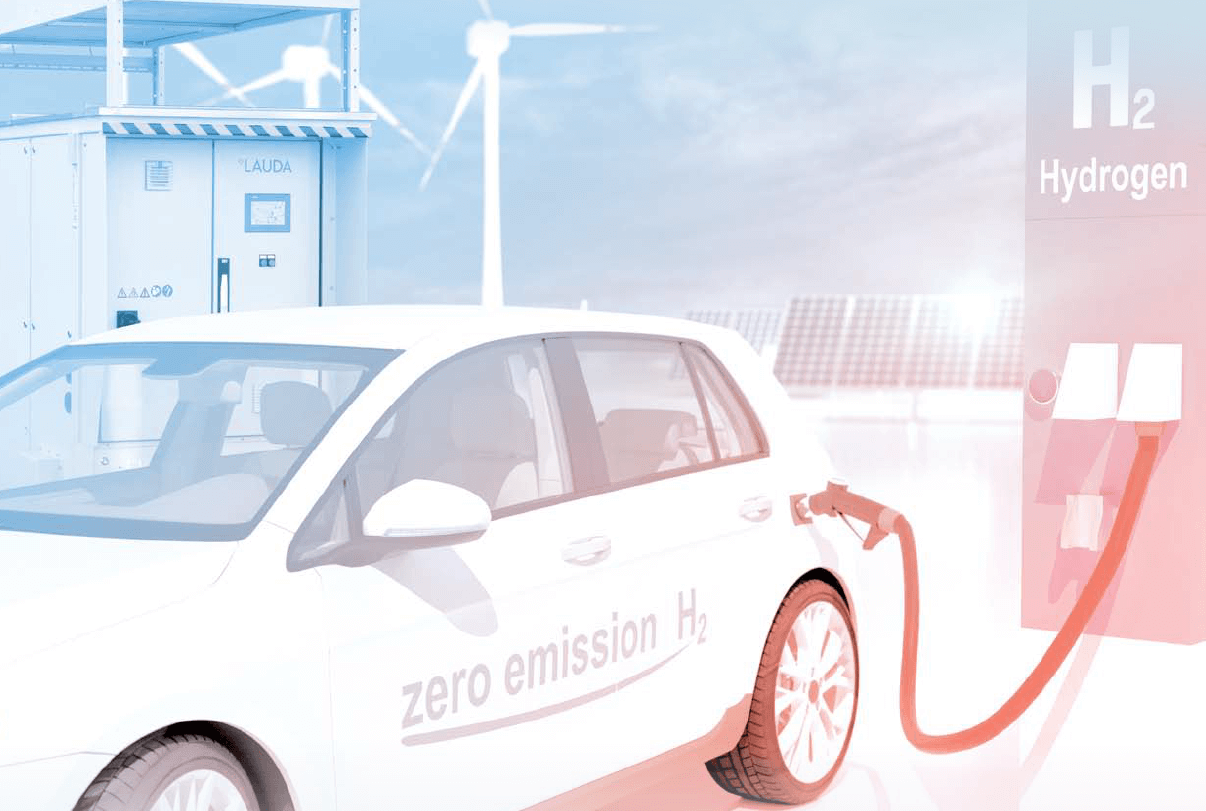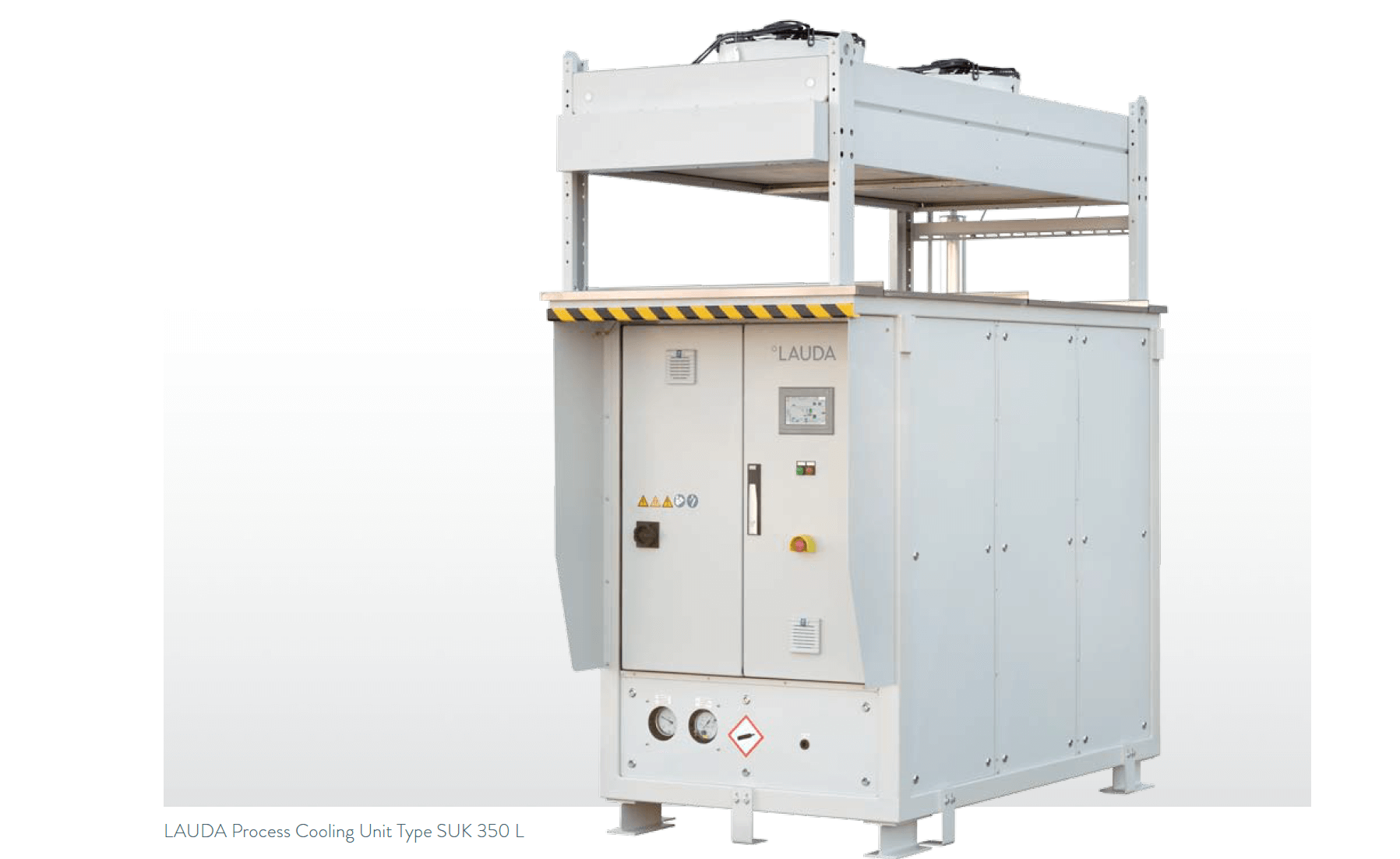
Green hydrogen – an energy carrier with a future Hydrogen has a key role to play in managing the energy transition. Hydrogen is extremely important for an environmentally friendly energy system, both for energy storage and for future mobility. but this element has its downsides. The production of green, i.e. climate-neutral, hydrogen must be realized with the right technology. The potential of hydrogen as an energy carrier of the future is promising: firstly, this chemical element has a high energy content (calorific value) of 33 kWh/kg. This means it outperforms diesel fuel by just over 10 kWh/kg. as well as offering higher energy efficiency compared with combustion engines, fuel cell/electric drive systems can achieve a range of about 800 km with a tank filled with 5 kg of hydrogen. In addition, hydrogen electrolysis is an excellent way to utilize surplus electricity from renewable energies. lauda offers innovative temperature control solutions to meet the challenges of handling hydrogen, which arise in the refueling of hydrogen vehicles, for example.

Application example
an example of the technical challenges involved in the use and supply of hydrogen can be seen in the hydrogen filling station. This can only be compared to a conventional filling station for gasoline or diesel to a limited extent: This is because liquid refueling is usually an attractive option for heavy vehicles (e.g. trains or ships), where much larger quantities of hydrogen need to be stored. Passenger cars normally refuel with gaseous hydrogen. The differences from conventional filling stations start with the delivery.
The hydrogen is delivered by a special transporter in container bundles pressurized to more than 1000 bar. The bundles are steadily emptied at the filling station, and the H2 compressor is switched in from 700 bar downwards. The gaseous hydrogen then reaches a density of 56 percent of the liquid state. However, the heat generated during compression must be dissipated. This is provided by a cooling device, which supplies the compressor with a coolant (heat carrier liquid) at a constant −18 °C.
LAUDA has modified an ultracool circulation chiller for this purpose, to achieve the required temperature. even lower temperatures are required for the actual refueling process: −40 °C is required for pre-cooling.
These lower temperatures are necessary because hydrogen tanks in vehicles are usually specified to a maximum of 85 °C. However, refueling at a pressure of 700 bar causes high compression of the remaining gas in the tank and heats it up. Therefore, the hydrogen must be pre-cooled to absorb this heat energy. a high cooling capacity is required for a short time, to get 4 to 5 kg into a passenger car tank within four minutes. 40 kW is output for a period of about 20 seconds shortly after the start of the refueling process. This is where one advantage of indirect cooling, as applied by lauda, becomes apparent: an accumulator can be realized, so that the cooling system only needs to be dimensioned for an output of 20 kW.
Since vehicles are not yet queuing up at hydrogen filling stations, the system has sufficient time to cool down again between two refueling processes. The accumulator also has the advantage that the dispenser is immediately ready when a vehicle drives up. The heat energy is discharged indirectly via the liquid heat carrier over a distance of 30 to 40 meters. This is a real advantage, as a cold temperature of −40°C is needed as close as possible to the vehicle. However, the cooling unit emits noise – meaning it can be positioned further away.
Cooling capacity must also be safely provided when the ambient temperature is between −20 and 42 °C, which is now a widespread specification in central europe, due to rising (outdoor) temperatures. In this respect, the system is usually located in the open air. These factors also speak in favor of indirect cooling, as its design is technically more robust. lauda has developed a special suK Process Cooling unit with a cold accumulator for this purpose, which is already used at many filling stations.

LAUDA TEMPERATURE CONTROL SOLUTION FOR REFUELING HYDROGEN VEHICLES – PROCESS COOLING UNIT TYPE SUK 350 L
Design features
- Outdoor installation
- Air-cooled refrigeration system
- Outdoor temperatures between −20 °C and 40 °C
- Hermetically sealed pump with magnetic coupling
- Outputs from 4 – 8 m3/h against 2 bar
- Cooling capacity 20 kW at −40 °C
- Cooling capacity (peak): 40 kW at −40 °C
Considered standards and directives
- EN 378-1 to 4 (Refrigeration Installations and Heat Pumps)
- Pressure Equipment Directive 2014/68/EU
- Technical Requirements for Pressure Vessels and Pipelines ad 2000
- Machinery Directive 2006/42/EC
- Low Voltage Directive 2014/35/EU
- EMC Directive 2014/30/EU
Electrical Safety of Installations and Machines DIN EN 60204
